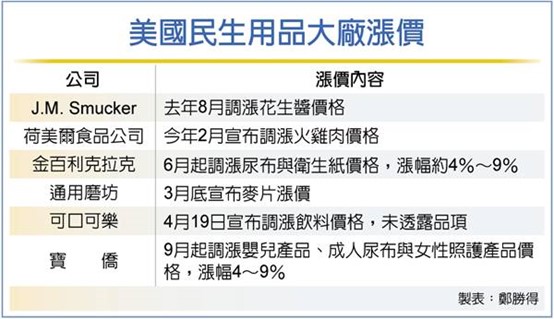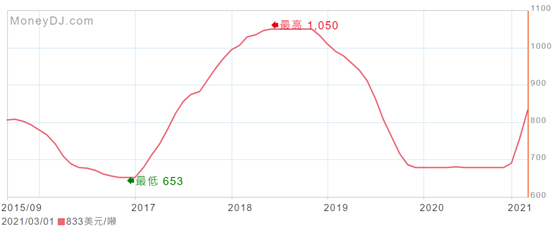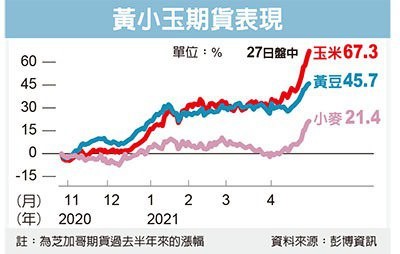A few days ago Coca-Cola announced a price increase next year, and other world-renowned companies have also issued announcements about product price increases. Not only did food companies adjust their prices, but the agricultural product price index also broke new highs in recent years. Does this mean that the clarion call for future inflation has sounded?
World-renowned manufacturers have raised their prices
Coke is an indispensable drink in European and American countries, and some countries even drink more Coke than water. A few days ago, Coca-Cola launched a shock bomb, and decided to increase the price of some products due to increased costs. Although it has not been stated whether Coke will be adjusted upwards, it has attracted market attention. In addition, Baoqiao (P&G), a major consumer goods manufacturer, also announced that starting from September this year, the prices of its baby products, adult diapers and female care products will increase by 4-9%. In addition to Coca-Cola and P&G, others such as Kimberly Clark, which owns toilet paper brands-Kleenex and paper diaper brands-Huggies, raised the prices of toilet paper and diapers by 4-9% in June this year. To reflect the rising cost of raw materials. According to United Nations figures, the Global Food Price Index (Food Price Index) in March this year also rose for 10 consecutive months, the highest since 2014. All these show that raw materials and prices are becoming more and more expensive.

Large-scale consumer products manufacturers in the United States and their timeline for price increases (Source: Commercial Times)
The prices of pulp and agricultural products are soaring
Starting in the fourth quarter of 2020, international pulp prices have risen. As of the first quarter of this year, the price of long fiber pulp has risen from US$840 per metric ton to US$1018, an increase of 21.2%, while the price of staple fiber pulp has increased by 22.5%. Not only pulp, but also the prices of agricultural products have risen surprisingly. Take soybeans, wheat, corn as an example. Droughts hit the United States, Canada, France, and Brazil, causing crop failures in wheat and corn fields in these countries. The drought in the United States may last until summer, and it will seriously affect crop yields in agricultural areas. Argentina suffered heavy rains and reduced soybean production. Because of the extreme weather and the sharp decline in production, the price of the 3 materials has reached a new high since 2013. For example, the June wheat futures price was 7.6925 US dollars per bushel, while the Chicago Corn July futures came to 6.84 US dollars per bushel, both of which were the highest prices since 2013. The June futures price of soybeans was $15.7475 per bushel, which was a new high at the end of 2012.

NOREXECO Staple Fiber Pulp Price Chart (Source: We are social & Hootsuite)

Soybean, wheat and corn futures performance (Source: Bloomberg Information & Economic Daily)
QE increases the risk of inflation
Rising prices of raw materials and agricultural products have put pressure on inflation. The QE (quantitative easing) of global governments for more than ten years has increased the possibility of future inflation. The 2008 financial tsunami forced global governments to increase cash liquidity to stimulate the economy, which indeed created a ten-year global bull market. However, QE is an abnormal monetary policy after all, which may cause greater structural problems in the long run. If there may be corporate or personal borrowing beyond its acceptable range. Due to the large amount of cash circulating in the market, the real purchasing power of currency is diluted, leading to rising prices and forming inflation. Although governments of various countries have begun to shrink their balance sheets in 2019, they want to gradually bring the currency market back to normal. With the help of the Covid-19 pandemic and the stagnation of the world economy, governments of all countries can only continue QE and postpone the scale reduction in order to save the stagnant economy that has been hit hard by the epidemic. This also increases the risk of future inflation.
Inflation risks increase, emerging economies are the most vulnerable
Raw materials are becoming more expensive, food prices are getting higher and higher, and QE is also contributing to rising prices. Societe Generale has warned that food inflation may cause social problems, especially in emerging economies, which are more susceptible to impact and cause social and national unrest.
Faced with increasing risks of inflation, not only governments, especially emerging countries, need to be careful. Investors should make arrangements for this as soon as possible to avoid falling into an inflation storm.